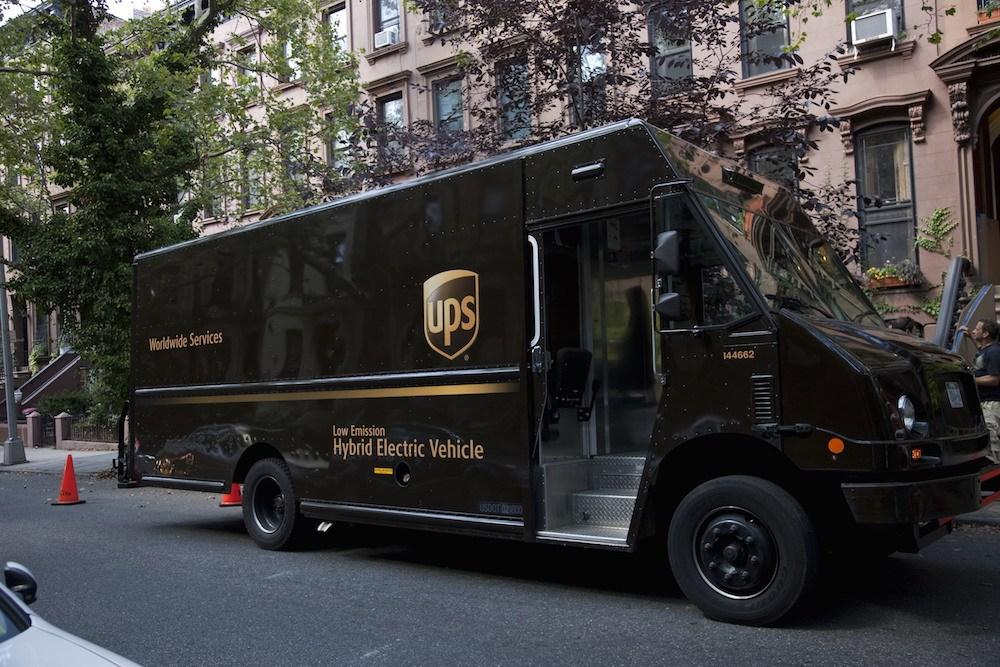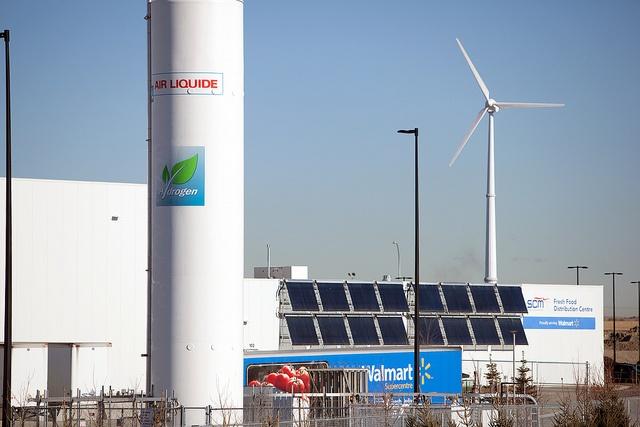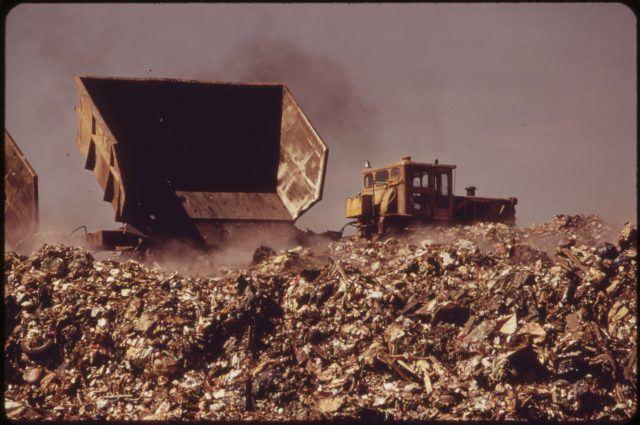Justice Department Phasing out Privately Run Prisons


The private prison industry is a $5 billion business, but a recent decision by the U.S. Department of Justice (DOJ) has signaled that this controversial business could be on the decline. Last Thursday, Deputy Attorney General Sally Q. Yates instructed the Bureau of Prisons (BOP) to reduce its reliance on privately run prisons. As each prison contract approaches the end of its term, the BOP has been instructed to either decline to renew or reduce that agreement’s scope.
The news on Thursday sent shares of prison contractors spiraling. The stock price of Corrections Corporation of America (CCA) fell 50 percent, from $27 to $13, before recovering to just over $19 when the markets closed Friday afternoon. GEO Group, another large prison contractor, saw its stock take a similar tumble.
As the federal prison population rate increased eight-fold between 1980 and 2013, the BOP began to contract with more prison contractors to cope with the surge in inmates. That number peaked three years ago, when the DOJ's “Smart on Crime” initiative offered reforms to decrease the total number of federal prisoners. Changes in the way money was allocated to take on the most important law enforcement priorities, a reduction in punishments for non-violent offenses, as well as recidivism prevention programs, together helped reduced the federal prison population from 220,000 in 2013 to 195,000 this year.
Federal and state governments have said they have had to turn to private contractors in order to deal with rising inmate populations. But critics of these for-profit companies have alleged that such a shift caused a bevy of problems. As symbolized when a Mother Jones reporter recalled his experiences after working in a privately-run prison for four months, the industry was rife with problems. Contractors such as CCA hire corrections officers with no experience, as in Shane Bauer, whose resume and public profile showcased stints working for the Foundation for National Progress and writing about California’s state prison system.
The experiences of Bauer reveal the problems that have festered as governments entrusted for-profit companies to run their correctional facilities. Privately-operated prisons also do not have the same disclosure requirements as publicly-run correctional facilities, and abuses are rife throughout the system. Sexual abuse (by inmates and guards), inadequate security that risked the safety of prisoners and staff, and inadequate healthcare are amongst the problems the outsourcing of prison management has caused.
Despite the problems endemic in this industry, lax oversight has allowed these companies to bilk taxpayers and heap on abuses. And as a report by In the Public Interest (ITPI) has revealed, companies such as CCA and GEO Group have been able to lock in prison occupancy rates to secure a guaranteed revenue stream from state governments. Another study by the University of Wisconsin has suggested that private prisons have been incarcerating prisoners for longer terms in the interest of scoring more public funds, without any reductions in recidivism or future crime rates.
If the definition of insanity is doing the same thing over and over again expecting different results, then the U.S. prison system’s reliance on the private prison industry has been a failure to communities and taxpayers. The U.S. prison population is the highest in the world, with over 500,000 more people than China, a country with five times the number of people.
The DOJ’s decision will reduce the number of federal inmates in privately run prisons to about 22,000, or 12 percent of its incarcerated population. In state prisons across the U.S., however, there were 94,000 inmates in such prisons as of the end of 2014. According to Reuters, this DOJ decision will not have an impact on how those prison systems are operated. Neither will last week’s announcement affect detention centers managed by Immigration and Customs Enforcement, many of which are also privately run.
Image credit: California Department of Corrections/Wiki Commons
Working Women Champion Ivanka Trump Does Not Pay Her Interns


Ivanka Trump, often credited for managing both her father’s campaign and his image, has in recent days been widely mocked and criticized after a recent blog on her fashion company’s web site and social media postings reveal that her company relies in part on unpaid interns.
The reliance on unpaid labor is in stark contrast to the Trump campaign's effort to appeal to working class and everyday Americans. Donald Trump’s daughter is credited as both an outsized and moderating influence on her father’s presidential quest. Her star shined brighter after giving a well-received speech last month at the Republican National Convention about women's equality. Next spring her book about working women and work-life balance will be published.
But as with the case for the Trump’s proposed child care policy – which appeared to be highly influenced by Ivanka – the use of volunteer interns at her company adds to the narrative that the younger Trump's advocacy of “working women” only applies to women who are upper-income and well-connected.
The blog post, “How to Survive as an Unpaid Intern,” written almost a month ago, came to light last week when Ms. Trump, or more likely someone tweeting for her, posted a link. The long dribble of advice, written by an unpaid intern, discusses the challenges of working for free in New York City. The obvious solutions will elicit many an eye roll: save up during the academic year, work a part-time job to gain some extra cash, set a budget, do not splurge when socializing and ask if any expenses are reimbursable. Reading between the lines, however, offered the most obvious solution: be supported by one’s parents.
[embed]https://twitter.com/IvankaTrump/status/766394275571441664[/embed]
The problem with Ivanka’s intern's advice is that for most recent grads, an unpaid internship is is simply untenable. It's also likely illegal, unless these interns happen to be receiving academic credit. Then add the vicious cycle of employers expecting new post-university hires to have internship experience: a recent National Association of Colleges and Employers survey revealed a 20 percent gap in hiring rates between those students who had an internship and those who did not. Those with a paid internships had an even higher offer rate, and higher salaries, when compared to students who worked without any financial compensation.
This system has led some commentators to suggest that the internship system today allows a privileged few graduates to advance in their careers while many struggle to find gainful employment after graduation. Last month, Darren Walker of the Ford Foundation urged corporate America to take action in order to make internships far more accessible to all.
Considering the odd timing of this post, part of a series that covers everything from surviving in New York City to “maximizing” the experience, one Salon writer surmised that the sunshiny posts were actually an underhanded act of sabotage against the Trump brand. And one observer could not get past the odd wallpaper that marked the beginning of the post:
[embed]https://twitter.com/malikazwanya/status/766396349956755456?ref_src=twsrc%5Etfw[/embed]
Indeed.
Image credit: IvankaTrump.com
U.S.N.S. Harvey Milk to Be First Navy Ship Named After Openly Gay Leader


In a signal of how far LGBT rights have advanced here in the United States, the U.S. Navy held a ceremony last week on San Francisco’s Treasure Island to announce that a Navy ship will be named in honor of Harvey Milk. Milk was the first openly gay man to be elected to public office when he won election to the San Francisco Board of Supervisors in 1978. Less than one year later, he and San Francisco Mayor George Moscone were assassinated in City Hall by a former city supervisor who was also a political opponent of Milk.
The ship, U.S.N.S. Harvey Milk, will be completed, christened and launched in 2021, according to the San Francisco Chronicle. One of six T-AO 205 tankers that will be named after civil rights leaders, the ship will haul fuel, spare parts and other supplies to ships and carriers operating at sea. The other ships in this series will be named after John Lewis, Robert F. Kennedy, the suffragist Lucy Stone, abolitionist Sojourner Truth, and former Supreme Court Chief Justice Earl Warren.
Milk enlisted in the Navy in 1951 during the Korean War. He served until 1955 when his career as an officer ended with a “less than honorable discharge,” according to the Associated Press. Some claim that Milk was booted from the Navy because of his sexuality; others say it was because of his fraternization with enlisted personnel. Those records are still sealed and the U.S. Navy has refused to comment on the exact reason.
Comments on social media have shown how some have chaffed at the thought of not naming a ship after a U.S. state, politician or a military leader. But as widely quoted by news outlets, U.S. Secretary of the Navy Ray Mabus remarked at last week’s ceremony that “a more diverse force is a stronger force.”
This step taken by the military follows the lead of the business community, which has been far ahead of government institutions when it comes to dignity for LGBT Americans. Businesses have provided benefits for the domestic partners and spouses for gay and lesbians long before last year’s U.S. Supreme Court decision that legalized gay marriage. Companies have been pushing back against what they see as “hate laws” such as North Carolina’s “bathroom bill.” The NBA stood up to the Tar Heel state’s government and has announced it will be moved from Charlotte next year. And despite all the noise in state capitols, more companies are making a concerted effort to hire and retain transgender employees. With last week's ceremony, the U.S. Navy has now made it clear that all these changes are not about making a few uncomfortable, but instead, that everyone is welcome to make a contribution within this country.
Image credit: U.S. Secretary of the Navy/Facebook
An Innovative Path to Sustainable Transportation


By Mark Wallace, UPS
As the effects of climate change become more apparent, it is increasingly the responsibility of big brands, which have both the size and scale to make a tangible difference, to identify solutions to pressing environmental challenges.
The transportation and logistics industries are no exception. Greenhouse gas emissions from transportation accounted for approximately 26 percent of total U.S. emissions in 2014, making it the second largest contributor after the electricity sector. Within the sector, light-duty vehicles (including passenger cars and light-duty trucks) were by far the largest contributor, accounting for 61 percent of emissions, while medium- and heavy-duty trucks made up the second largest category, with 23 percent of emissions.
The impact from GHG emissions is not only an environmental issue, but also a business one. The need for sustainable solutions is urgent: An additional 1 billion people will move into cities by 2030 and 670 million more light-duty vehicles will be on the world’s roads by the same year. More vehicles mean more greenhouse gases, reduced air quality and increased congestion which makes it harder to freely move goods through urban areas.
As a global provider of transportation and logistics services, my company, UPS, is acutely aware of how sustainable urban transportation solutions can create more efficient business operations. This is why it is important for companies like ours to invest time and resources into creating and implementing solutions that will help revolutionize global transportation, and participate in cross-company collaborations to ensure lasting impact.
Growing commitments and investments in transportation innovations
This year marks more than 10 years of learning from UPS’s rolling laboratory, our cutting-edge approach to finding and deploying alternative fuel and advanced technology. This research-based method helps us identify the most efficient transportation methods and solutions to logistical challenges in a range of regions and environments. We’re now driving more than 1 million miles every business day, around the world, in our alternative fuel and advanced technology fleet. In 2015 alone, our rolling laboratory helped avoid using 49 million gallons of conventional gas and diesel and decreased CO2 emissions by 150,000 metric tons.
Through the years, I’ve witnessed other committed companies in the transportation industry develop innovative solutions that have helped to shape a more sustainable future. From electric and hydrogen-powered cars to personal rapid transport, transportation has seen a radical progression toward lower emissions in recent years. These innovations have collectively increased the number of companies that make and use the vehicles and infrastructure that will form the backbone of tomorrow’s sustainable transportation solutions.
The critical value of collaboration
The challenges may seem immense and, at times, insurmountable. As industry players invest in sustainable solutions to pressing challenges, it is often the cross-company collaborations that can make lasting impacts. Innovation, particularly industry-changing innovation, happens through connecting previously unconnected bodies of knowledge. In this spirit, based on UPS’s years of commitment to more efficient transportation, our advice to companies developing their own approaches to sustainable solutions is four-fold:
1. Encourage innovation. What started out as an “approach” with our rolling laboratory has become an ecosystem of innovation and progress shaped by collaboration with suppliers, policymakers and other stakeholders. Our 100,000 global vehicle fleet has spurred technological and infrastructure improvements to make cleaner fuels and technologies economically viable.
2. Adapt and tailor the solution. There can be multiple solutions based on needs in different scenarios. With respect to UPS’s work, the fuels and vehicles that work in one region or one setting may not make sense in another. Technology constraints, product use, infrastructure availability, government policies and environmental or social goals all play a role in determining custom solutions throughout the globe.
3. There's no substitute for data. Each day, UPS views 30,000 delivery route optimizations per minute through its On-Road Integrated Optimization and Navigation (ORION) system, which uses fleet telematics and algorithms to reduce the number of miles driven. The application of this big data approach to the UPS rolling laboratory’s fleet has improved vehicle and delivery performance and reduced fuel, emissions and costs.
4. Stay Committed. Economic and market forces are constantly changing, and the political environment that is necessary to foster investment and infrastructure development can be unpredictable. It took UPS more than a decade to reach a point where the accumulation of miles driven by its fleet offered a clear return on investment. During that time, we have measured and reported our progress in our annual Sustainability Report, thereby offering insights to improve and support these long-term commitments.
Accelerated innovation of the transportation industry is dependent on the investments of like-minded corporations, industry trade groups and government organizations all working toward the goal of decreasing emissions. Collaboration, sharing of key insights and best practices will also be necessary to drive sustainable transportation forward in the coming years. UPS is committed to being at the forefront, and working with other leaders in the business, nonprofit and government sectors to use innovation as a tool for addressing these challenges.
Image credit: UPS
Mark Wallace is Sr. Vice President of Global Engineering and Sustainability for UPS.
These Cities are Investing in Walkable Neighborhoods


According to Redfin, several American cities – some the usual progressive suspects, but others quite surprising – are making moves to build more homes in walkable neighborhoods. Other, however, are stuck in the past, building more of the distant suburbs.
Why do we need more walkable cities? Quite simply because walkable cities are, by definition, sustainable cities. Transportation remains a major source of greenhouse gas pollution, and, unlike electricity or agriculture, the United States remains firmly stuck on a fossil-fuel dependent transport infrastructure. When we live in spread out suburbs, far from work, shopping, schools, and cultural centers, we have to drive. Often, we drive inefficient, single-occupancy vehicles, burning more fossil fuels, and creating more traffic.
In fact, the existence of more walkable neighborhoods (along with effective public transit) is likely the chief reason that Europe, Japan, and South Korea, other developed, highly industrialized economies, have far lower per-capita greenhouse gas emissions than us here in the U.S. Transforming our cities from car-centric to walkable, dense, green neighborhoods is one critical step to meet future climate goals.
We all know that San Francisco, New York, and Boston are walkable, due mostly to the fact that their urban centers here were built and designed before the ubiquity of the automobile. But a recent report from Redfin analyzed which cities are investing in walkable neighborhoods and has some pleasant surprises. For example, Cleveland, Seattle, and Dallas were all ranked in the top 10, as each are building more homes in walkable neighborhoods than before. All three have very low average walk scores (between 45-59, as compared to 86 for San Francisco and 81 for Boston).
The big winner? Philadelphia, where the historic urban core is being redeveloped at a rapid clip. With an astounding 91 percent of new homes being built in neighborhoods with better walk scores than the city's already high 78, it's only a matter of time before the city of brotherly love becomes a new urban, sustainability leader.
“Philly is on fire when it comes to walkable new construction,” said Redfin agent Tom Lewis in a blog post. “In nearly every direction you look there are new apartments or condos going up and older buildings are being rehabilitated.”
On the flip side are the cities refusing to adapt to modern consumer, and environmental needs. This includes the city I spend most of my childhood in, Kansas City, ranked #6 on the list of cities building the least in walkable neighborhoods. It rings true. In my high school, most of my friends had cars at age 15, and we drove everywhere. The last time I returned, not only has the city grown outward, but the new neighborhoods had homes in even larger lots, and were more disconnected from the city center. It is incredibly unsustainable, short-term thinking, with planning reminiscent of 1980, not 2016.
Thankfully, it is cities like Philly, Denver, Oakland (my current home) and Boston that are not only seeing more dense development, but far faster growing home prices, and economic growth, than the cities following the old, unsustainable development patterns. Hopefully, it is only a matter of time before even Kansas City starts looking at how to built up, not out, with an eye towards walkable, friendly, sustainable neighborhoods.
Photo Credit: Gene Arboit via Wikimedia Commons
Employee Engagement at Waitrose and Other Supermarkets


By Chris Smith
For many of us, entering the world of employment, we might find that our first job is with a large food retailer. Across Western Europe, the food market is dominated by a number of large corporations including, but not limited to, Walmart, Carrefour, Metro AG, Tesco, as well as many more subsidiaries. In order to sustain businesses on such a massive scale, these businesses require large numbers of staff in order to fulfill day-to-day operations. Much of the work required to keep these companies going from falls under the remit of the customer assistant. The traditional customer assistant role is defined as being fairly low-skilled, low-paid, and often filled by young people as their first job.
As food retailers have the potential to have a large environmental impact across their operations, be it through sourcing suppliers, how their products are farmed and produced, logistical operations, as well as the environmental impact of store locations, it is doubly important for a succinct environmental policy to be implemented. A quick look on the big players websites such as Walmart, Lidl and Tesco shows that these businesses do appear to take the environmental cost of their operations seriously. An environmental mission statement is only as good as it's execution, however. For a large retailer to reduce it's impact on the environment, an green attitude must be adopted across the entire business.
Last month, Raz Godelnik argued that CEOs have limited control over the environmental impact of their businesses. Here, the issue is largely similar, as it requires engagement from staff at every level. The question that those in the upper management level should be asking themselves is what can be done to encourage every single one of our employees to invest in our vision for sustainability.
Some retailers are better at employee engagement than others. The UK supermarket Waitrose is part of the John Lewis Partnership, an employee owned department store, famed for how well it's staff are treated. John Lewis is frequently cited as being one of the best companies to work for in the UK. Looking at Waitrose, we can see that this same attitude is fostered through the treatment of new employees. Upon receiving a work contract, new customer assistants are given shares in the company and made 'Partners' through their Employee Stock Ownership Plan (ESOP). Giving new workers a tangible stake in their place of work is a proven method of improving company commitment.
The Waitrose website reveals a strong commitment to environmentalism. The business practices they have implemented cover a variety of issues, ranging from reducing the amount of waste generated by individual stores, to the responsible sourcing of fish, as well as collaborative work with environmental charities such as The Woodlands Trust and The Prince's Countryside Trust. Bringing it back to the workers of Waitrose themselves, what can we glean from this combination of staff engagement and ambitious environmental policy?
A closer look at the supermarket's Indeed profile shows a rather impressive 4.1 out of 5 score. This gives us a snapshot that Waitroses' employees are satisfied, and makes for interesting reading when compared with other British supermarkets such as the Walmart owned ASDA, whose employees gave them 3.7 out of 5, and Tesco, who have 3.8. So when we put satisfied staff with an ambitious environmental policy, what do we have? (Interestingly, Waitrose's parent company John Lewis, which also uses an ESOP has a rating of 4.2.)
Research conducted by ethicalConsumer.com found Waitrose to be the third most ethical supermarket in the UK behind the Co-Op and M&S. The poll's scoring system actually puts Waitrose top of the pile, however researchers at ethicalConsumer.com have adjusted their qualitative data to put the Co-Op and M&S ahead. The research took into account a number of variables including workers rights, supply chain management, and environmental impact. As Waitrose scores high on both how they treat their employees, and how environmentally conscious they are, other retailers should recognise that the two go hand in hand.
It's all too easy to stereotype low level supermarket customer assistants as disinterested and workshy. What we see online does little to help dissipate this image, with the likes of Grocery Store Bingo, and the People of Walmart website. However, when a large company takes the time to engage and invest in employees at every level, you end up with a business with a common goal. When that goal is to reduce the environmental impact inflicted by their operations, we end up with an example that other food retailers should be following.
Image credit: Duncan Hull, Flickr
Why Renewable Energy Is Now a Requirement for CSR


By: Megan Wild
One of the most relevant and effectively conveyed forms of corporate social responsibility is renewable energy. With countries all around the world committing to renewable energy goals in the Paris Agreement, companies can also take the lead.
Here are four reasons that renewable energy is a "must" for your company’s commitment to social responsibility.
Long-Term Employee Productivity Is Threatened
As the Paris Agreement showed, many of the world’s biggest countries are implementing costly-but-necessary plans in an effort to make renewable energy 100 percent by 2050. The big reason for this is that the effects of global warming are very real. In a business sense, global warming is set to cost the economy over a trillion dollars by 2030, with real concerns over increasing heat contributing to a lack of production.
According to Dr. Tord Kjellstrom, heat has a big impact on the workplace. “If you are physically active in work, the hotter it is, the slower you work. Your body adapts to the heat and in doing that it protects you from the heat," he explains. “For individual countries, even within a short timespan, the losses due to the increasing heat can be in the many billions.”
Clearly, global warming has the potential to influence employee effectiveness for the worse, which is something the business world should strive to avoid.
Renewables Are Becoming Cheaper And More Efficient
Renewable energy certainly isn’t a fad. There's now three times more wind power and 15 times more solar power in the world than in 2007.
Previously, a big barrier, especially for small businesses, to renewable energy efforts was the price.
However, over the past few years, the gap is closing. Solar and wind energy have declined substantially in cost; with onshore wind electricity falling 18 percent since 2009 and turbine costs falling 30 percent since 2008. This makes wind power the cheapest source of new electricity. For solar energy, the price has fallen by 80 percent since 2008, making a once-unobtainable energy source a very real consideration for homes and businesses alike.
As technology improves, renewable energy is also becoming more efficient. In years past, traditional solar panels would only work in areas with a high amount of clear and sunny days. The development of thin-film solar panels has improved efficiency during cloudy conditions, which increases the geographic areas that can use solar power.
As a result of dropping prices and increased efficiency, businesses can now pursue renewable energy without sacrificing a hefty sum. A business that publicly declares their renewable energy usage provides a positive perception among current and prospective clients. It showcases a business that cares about the world we live in.
In an age where the public perceives corporations as acting me-first, sustainability provides a breath of fresh air. It makes a business look better than their competition not using or promoting renewables.
Increased Employment Opportunities
A recent Greenpeace estimate found that, if the world switched 70 percent of electricity programs to renewable energy, the resulting savings would be $180 billion each year. Research like this shows little reason to fear economically for renewable energy implementation. Actually, improved renewable energy initiatives have boosted employment, with 380,000 new jobs created in Germany — where one-quarter of their national energy demands are being met by renewables.
While businesses do not have the resources of an entire country, it’s realistic for a business to cut costs using renewable energy. In some companies, this cost-saving measure could help them either raise salaries of hire more employees, thus growing their company. Saving on costs is something coveted by any business; and if renewable energy can play a role in that cost-cutting, it’s an added benefit.
The Impact Is Visible
Some corporate social responsibility plans do great work in improving the environment, which is very commendable. However, they often miss out on the publicity benefits that could come regardless. Some actions are less visible than others, though adapting and promoting renewable energy can be very visible. Especially when a business has solar technology outside of their offices.
Bottom Line: Renewable Energy Is Good for Business
A business that adapts to renewable energy should do so visibly, as it has a positive public stigma. Visible solar energy initiatives, for instance, are a great way to shift public perception toward the positive.
The four reasons listed here emphasize why renewable energy should be part of your company’s commitment to social responsibility. In addition to possible cost savings, it also has the potential for a very positive PR impact; along with a morale boost among employees and customers alike. Renewable energy looks pretty good for business.
Megan Wild writes about upcoming sustainability trends in the residential and commercial real estate markets. You can catch her tweeting about those trends @Megan_Wild.
3p Weekend: These Stakeholders Support a Carbon Tax -- And You Should, Too


With a busy week behind you and the weekend within reach, there’s no shame in taking things a bit easy on Friday afternoon. With this in mind, every Friday TriplePundit will give you a fun, easy read on a topic you care about. So, take a break from those endless email threads and spend five minutes catching up on the latest trends in sustainability and business.
As the Paris Agreement moves tantalizingly close to implementation, conversations turn to one element not present in the agreement -- a carbon tax. A carbon tax is what it sounds: a tax on carbon emissions from fossil fuels. It’s a Pigovian tax – or a tax levied with the intention of reducing use, much like a cigarette tax.
Not to be confused with a cap-and-trade scheme (which limits allowable emissions and transfers unused emissions to an auction system), a carbon tax imposes a direct fee on all emissions. In some schemes, revenue from carbon taxes fund research and development of renewable energy. In others, revenue is returned to taxpayers via a 'dividend' check. Surprisingly, voters actually prefer the former, while politicians find the latter makes for a better soundbite.
While American politicians continue to debate the efficacy of such a tax (the 2016 Republican platform says the party "oppose[s] any carbon tax"), external stakeholders are lining up in support. Check out what they have to say before you make up your mind.
The majority of American voters
Despite snowballs in the Senate and manufactured political debates about the reality of climate change, the majority of American voters actually support a carbon tax.More than half (51 percent) of self-proclaimed Trump voters support a carbon tax on businesses, according a survey conducted in May by the Yale Program on Climate Change Communication. Add to this 70 percent of registered Democrats, according to polling from the Carbon Tax Center, and the picture becomes clear. It seems we may not be as divided as we thought.
Climate scientists and economic researchers
In a paper published earlier this year in the Journal of Economic Perspectives, a trio of professors from MIT and the University of Chicago argue:“Our conclusion is that in the absence of substantial greenhouse gas policies, the U.S. and the global economy are unlikely to stop relying on fossil fuels as the primary source of energy.”They argue that a carbon tax is necessary if the U.S. is going to be serious about addressing carbon emissions. This adds to the findings of a 2012 study by the Congressional Research Service, which showed the U.S. deficit could be reduced by 50 percent in 10 years through the adoption of a $20/metric ton carbon tax.
Elon Musk
Clean-tech visionary Elon Musk, CEO of Tesla Motors and SpaceX, isn't shy about his support for a carbon tax. And he reiterated this sentiment earlier this month during an interview about Tesla’s gigafactory in Nevada.This time around, Musk's case appeared arguably libertarian. When asked about subsidies for his company -- and the clean-energy industry in general -- Musk fired back at fossil fuel subsidies, which totaled $13 billion last year.
“With respect to some of the other elements for solar panels and [electric vehicles], the big issue we have is that in reality if you accept the scientific consensus, every oil-burning activity is subsidized — dramatically,” Musk told the Reno Gazette-Journal.The solution, Musk went on, is to correct this “fundamental economic error” by establishing a carbon tax.
Energy giants...
According to CDP (formerly the Carbon Disclosure Project), 18 major energy firms set an internal carbon price as of last year. Some of these companies went above and beyond by making public calls for a national or international carbon tax.Leading the list is oil-sands giant Suncor. CEO Steve Williams reiterated this position in March, saying a carbon tax is the type of policy needed in order to move aggressively against climate change — a stance the company says it has taken since 2011. Shell's CEO, Ben van Beurden, also voiced support for a carbon tax last year.
Surprisingly, the list also includes ExxonMobil. CEO Rex Tillerson first said the company would be open to a carbon tax back in 2009, and Exxon continued to fall back on this position. Critics point to the company's continued funding of climate-denial organizations as evidence that this stance is mere lip service. But the fact that a company of ExxonMobil's scale publicly purports to support such a tax indicates it may soon be inevitable.
... And hundreds of other multinationals
As of last year, more than 1,000 companies had set an internal carbon price, according to the CDP. This list includes sustainability darlings like Seventh Generation, which established an internal carbon tax at the start of this month.“The carbon tax anchors our greenhouse has reduction strategy in the heart of our business, activating our entire organization in support of our 2020 goal to obtain our energy from non-fossil fuel sources,” said Seventh Generation CEO John Replogle.It also includes companies focused on more than going green, including software giant Microsoft. The multinational tech firm established an internal carbon fee in 2012, which was charged to individual business groups using Microsoft services. The funds were used to invest in energy-efficiency initiatives, renewable energy and carbon offset projects.
Since 2014, 100 percent of Microsoft’s energy consumption was sourced or offset due to these projects, Hugh Jones, managing director of advisory for the Carbon Trust, wrote in an op/ed on TriplePundit.
The International Monetary Fund
The International Monetary Fund is about as stodgy and penny-wise a group as one can find. But it still supports a carbon tax, as its managing director, Christine Lagarde, articulated last year.“To get it right, we have to price it right,” Lagarde exhorted during 2015 IMF-World Bank meetings held in Lima, Peru. Criticizing global energy subsidies, which she said total $5.3 trillion annually, or 6.5 percent of the world’s GDP, Lagarde insisted now is the time to eliminate such price supports and tax incentives, as the current price of energy is low.
Governments (like... a lot of governments)
A growing list of nations around the world are adopting carbon taxes or other market-based mechanisms to curb emissions. Carbon taxes or emissions-trading schemes are either operational or planned in the EU, U.S., China, Japan, South Korea, Switzerland, Norway, Turkey, Mexico, Chile, Thailand, Ukraine, Kazakhstan and South Africa, Jones of the Carbon Trust wrote on TriplePundit.Such taxes are present even in unconventional locations like British Columbia, the third most populous province in Canada and home to vast oil and gas reserves. The province established a carbon tax in 2008, and studies show its efforts are working: B.C. reduced carbon emissions 3.5 times faster than the rest of Canada, the Carbon Tax Center found earlier this year.
So, what is your stance on a carbon tax? Do you think it's the best way to reduce emissions while preparing for a low-carbon future, or do you have a different solution in mind? Tell us about it in the comments section.
Image credit: Pexels
New Univision Op-Ed Nails Donald Trump, Dings Peter Thiel


The hits just keep coming for prominent Donald Trump supporter and Facebook board member Peter Thiel. On Monday, Thiel penned an op-ed for The New York Times that earned him a quick, brutal smackdown from a sitting Congresswoman. On Tuesday, Spanish media titan Univision acquired Gawker Media -- Thiel's longtime nemesis -- which could guarantee a far bigger audience for any future critiques the Gawker crew levels at the Silicon Valley tycoon.
On Wednesday, coincidentally -- or not -- Univision published a scathing op-ed by a Republican activist. The target was Trump, but the subject matter could just as easily apply to Peter Thiel and any other prominent Trump supporter.
The Univision op-ed by Rosario Marín
The new op-ed appeared on August 17 under the title, "Why this Republican is endorsing Hillary Clinton." It was written by Republican insider Rosario Marín.
Marín's life story embraces many hallmarks of the immigrant experience, including being labeled a slow learner in high school before gaining fluency in English. She went on to become the first Mexican-born U.S. Treasury Secretary, a position she achieved under Republican President George Bush.
Marín never mentions Donald Trump by name in the op-ed, but there is no mistaking who she means by this:
"... But since July 2015, when a certain candidate, upon entering the political arena, showed his contempt for Mexican immigrants by stating they were drug dealers, rapists and murderers, I have voiced my disgust and have warned one and all of the perilous threat he was to our party, our nation and the world."
Many other influential Republicans have denounced Trump. This op-ed is significant, though, because Marín is among the very few Republicans who have gone the next step beyond merely issuing a proclamation against Trump. She publicly and unequivocally pledged to vote for Hillary Clinton this fall:
"My party and its standard bearer leave me no choice; On November 8, I will vote for Hillary Clinton."
So, what does this have to do with Peter Thiel?
The trickle of Republicans against Trump has swelled into a flood, but so far Peter Thiel has declined to comment.
That's not particularly odd, considering the apparently important position that Thiel arranged for himself in the Trump campaign.
Thiel emerged as a California delegate for Trump without fanfare during the primary season. Within a few short months, he managed to secure a high-profile speaking role at the Republican National Convention.
Those of you who follow tech news may be a bit surprised to see Thiel's name linked so publicly to the Trump campaign. Virtually no other Silicon Valley A-lister has publicly endorsed Donald Trump for president.
However, the two men do share a healthy antipathy toward the media.
Thiel's affinity for Trump is also consistent with the last presidential candidate he endorsed, Ron Paul, whose career has been marked by anti-immigrant and outright racist positions.
The main difference is that Paul pivoted during his ill-fated runs for the presidency, and by the 2008 campaign he softened his nativist stance to the point of disappearance.
Nevertheless, it's a bit of a stretch to believe that Thiel had no idea about Paul's well-documented past when he became the candidate's most important financial backer during the 2012 election cycle.
Back in 2008, Thiel also reportedly donated $1 million to the anti-immigrant group Numbers USA.
Peter Thiel's support for Trump is also consistent with his apparent affection for Ezra Pound, the influential American poet and fascist sympathizer who became Mussolini's mouthpiece during World War II.
Also of interest is Thiel's planned speaking engagement this September at a conference held by the white nationalist Property and Freedom Society. The organization's founder, Hans Hoppe, has this to say about border control:
“… to post signs regarding entrance requirements to the town, and once in town for entering specific pieces of property (no beggars or bums or homeless, but also no Moslems, Hindus, Jews, Catholics, etc.) …”
So, when Rosario Marín says this about Trump...
"... I will stand up for my community against the menace of a tyrannical presidency that does not value the countless contributions of immigrants across its beautiful and bountiful history."
...she also appears to have Trump supporters like Peter Thiel in mind.
Photo (cropped and altered): via Sportsfile Web Summit on flickr.com, creative commons license.
Fixing America's Waste Problem


America's massive, growing landfills are the result of many decades of bad policies and decisions. And it will take a concerted, society-wide effort to solve this problem. Let's dive deeper into just how big our landfill waste problem is and how we can begin to shift toward a circular economy.
This is not just about waste. Landfills are directly connected to the larger sustainability issues facing this country. One of the reasons that America went down the path of throw-it-away is related to the reason we decided to build vast suburbs instead of dense, sustainable, walkable cities. We have a lot of land compared to most other developed countries. The same space we used to build suburbs, roads and an auto-centric culture, we also used to hide our waste as we moved into a throw-away economy.
Today, we have 2,000 landfills and counting, with our collective waste growing by the day. What began as a simple solution to a changing economy grew into a massive problem. The average American produces an astounding 4.4 pounds of trash every day, according to EPA estimates. This chart from SaveOnEnergy.com shows how many tons of trash are in each state's landfill, per-person.
Landfills are also a source of greenhouse gas pollution, with a significant portion coming from methane, which happens to be 84 times more potent than carbon dioxide. This methane comes from the vast amounts of organic materials found in landfills, and much of it connected to another issue we cover often here at TriplePundit: food waste.
Eliminating methane pollution has been cited as a key, short-term environmental goal if we are to achieve future climate goals. So far, little is being done across the country to limit landfill methane emissions. While capturing those emissions is key, it would be better to just eliminate organic waste from landfills altogether, by ensuring we eliminate food waste and compost the rest.
So, how can we get better? Perhaps we can look abroad, as other countries have lessons for America. Germany achieves a recycling rate of 62 percent, far higher than our 34 percent, due to standardized laws across the country. They also have a high deposit on bottles – 25 euro cents for glass, which for a beer can sometimes be 50 percent of the cost – and a wide network of automated recycling machines that made getting this rebate simple. Other countries, like South Korea -- which, due to its high population density and limited land-space, faces constraints on expanding landfills -- have built infrastructure to make composting not only simple, but also effective across the nation.
We're seeing action like this on a smaller scale in U.S. states like California, where recycling rates are higher than the rest of the nation, and municipalities such as San Francisco have implemented mandatory composting. But it's not enough.
In the end, what we need is a circular, closed-loop economy, where all waste is reused or recycled and nearly nothing ends up in landfills. Building a circular economy won't be easy. In America, though, the greatest challenge may be inertia, as we overcome the burden of so many years of bad planning and limited infrastructure. Regional action is great, but we need a concerted, national effort to really stem the growth of all those landfills.
Image credit: Miller, Gary via Wikimedia Commons